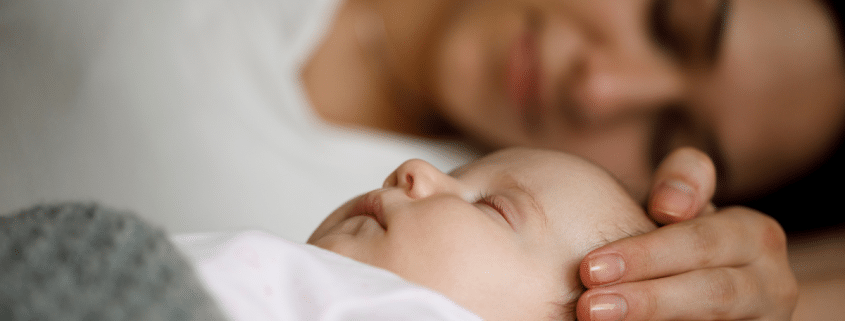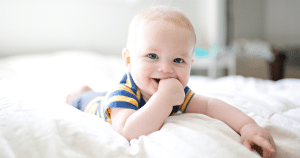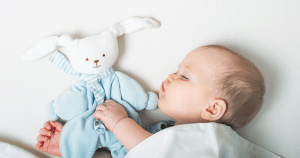What are the benefits of co-sleeping?
Co-sleeping is a huge topic in the world of parenthood, and there are many things you’ll need to consider. In this blog, we’re answering the question, what are the benefits of co-sleeping?
You must ensure that your baby is safe at all times. We’re going to let you know what co-sleeping is and how you can do it safely.
This blog includes:
- What is co-sleeping?
- Benefits of co-sleeping
- How to safely co-sleep with a newborn
- Safe co-sleeping positions
- When you should NOT co-sleep
- Things to be wary of when cosleeping
- How to transition the baby to their own room
What is co-sleeping?
Co-sleeping is when a baby and their parent share the same sleeping surface. This is usually in the parent’s bed, known as bed sharing.
Until your baby is six months old, it’s recommended that they sleep in the same room as their parent. However, it’s usually advised that the baby sleeps in their own crib in your room. This can reduce the risk of sudden infant death syndrome (SIDS).
There are some risks that you need to be aware of with cosleeping. It may be better for you to sleep with your baby in a separate crib close to your bed rather than in the family bed with you. The general advice is for the baby to sleep in their crib in your room. After six months, they can be moved to a separate room.
Benefits of co-sleeping
While the advice is to avoid co-sleeping, if you do, you need to ensure that you have read and understood all of the information.

Feeding your baby
Some women co-sleep to make breastfeeding easier through the night. This is usually because the baby is closer to you so that you can respond faster. However, you should remember that it wouldn’t take much longer for you to get across the room for nighttime feedings. You should avoid falling asleep while feeding your baby in all locations.
Checking your baby
Co-sleeping means that you’re closer to your baby, which can mean that you can check on them more frequently. This means that you may notice if something is wrong faster. However, again, you can still be in close proximity to your baby if they are in your room. So, you don’t need to worry because you could still notice any issues either way in a shared room.
Calming your baby
Some babies may feel more at ease being closer to their parents. If this is the case, you can position their crib in your room so they can see you. This may help them to settle better and is typically safer than bed sharing.
How to safely co-sleep with a newborn
Whether you cosleep often or as a one-off, you need to consider the risks every time. This can help to reduce the risk of issues for sleeping babies.
- Remove bedding – children can easily overheat or become trapped in bedding
- Have the baby sleep on their back
- Do not bring another person or animal into the bed
- Ensure that the baby cannot fall out of the bed
- Do not leave the baby unattended
These are extremely important things to follow when it comes to sleeping. Often, the risks outweigh the benefits, so many parents choose to have the baby in their room in their own crib.
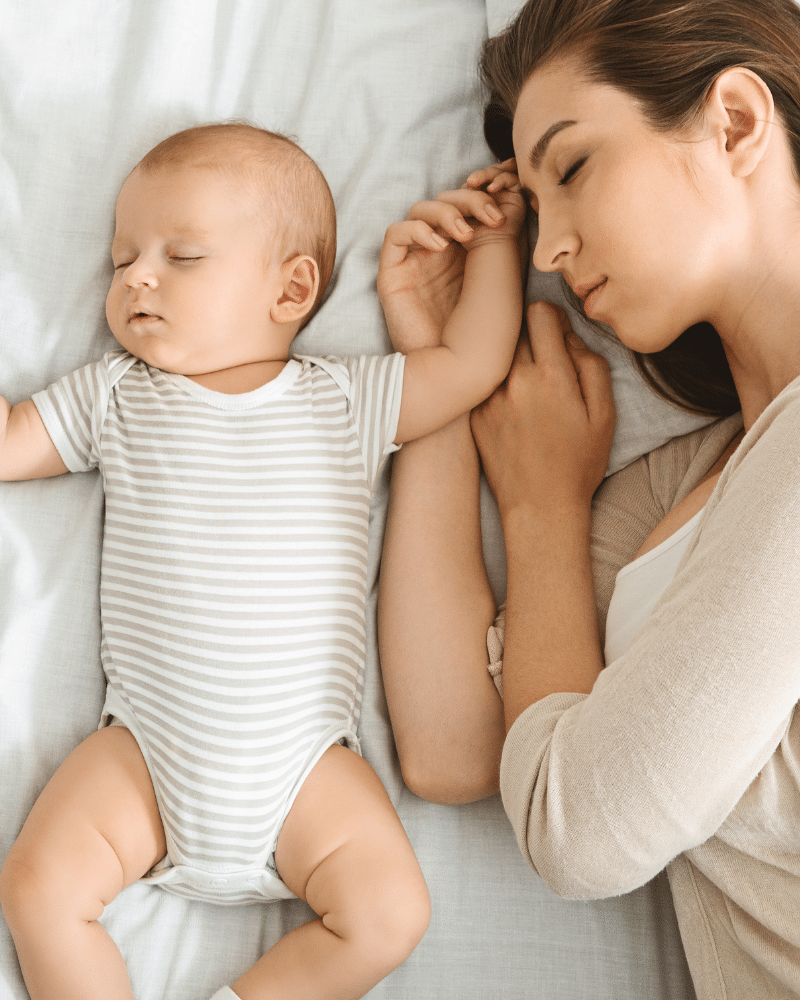
Safe co-sleeping positions
It’s usually best to have your baby sleep in your room in their own crib. However, if you are co-sleeping, ensure that the baby sleeps on their back.
Many parents choose to sleep on their side with their bodies almost curled around their baby. This can be helpful when breastfeeding as it requires minimal movement.
When you should NOT co-sleep
There are some instances where it is definitely not safe to co-sleep. You should avoid sleeping in the same bed if any of the following apply to you.
- You have been drinking alcohol (any amount)
- You or anyone else smokes in the home (this includes cigarettes and e-cigarettes)
- You have taken medication or drugs that can lead to drowsiness
- Your baby is under three months old
- Your baby was born with a low birth weight
- Your baby was born prematurely
It is not safe to cosleep in these scenarios, and you should avoid having babies sleep in the same bed. Seek professional advice if you are not sure.
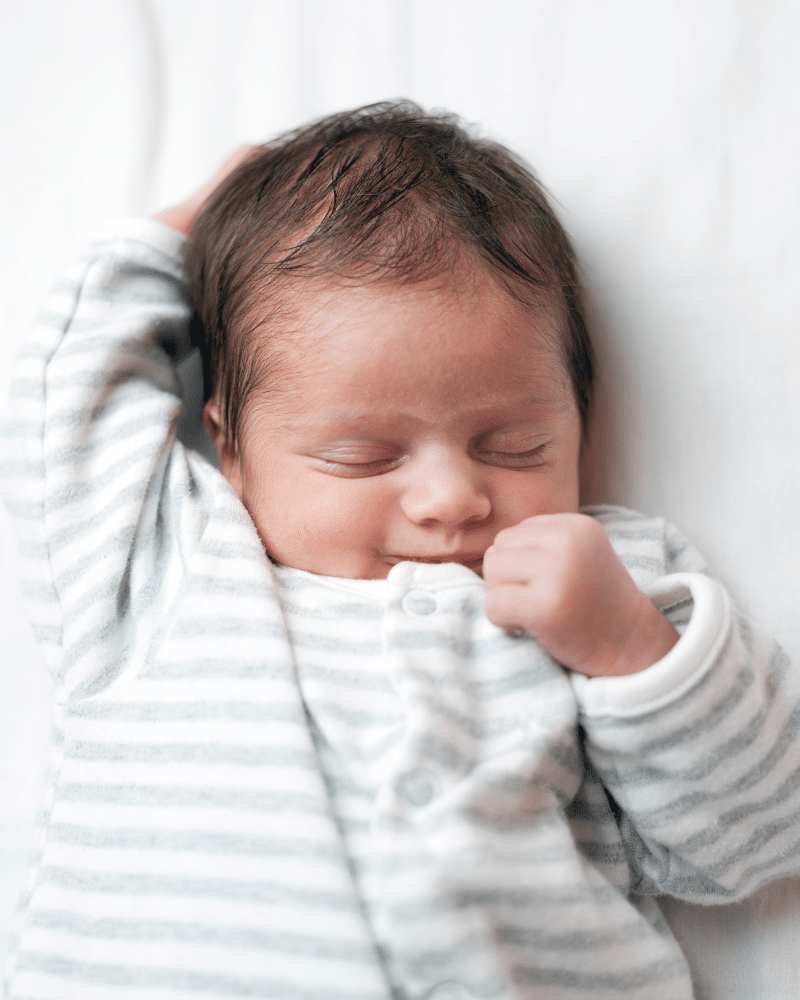
Things to be wary of when cosleeping
The main thing to be wary of when co-sleeping is sudden infant death syndrome. This is also known as sudden unexpected infant death, SIDS or cot death. This is when a healthy baby dies unexpectedly. It can happen to any baby when sleeping or awake.
Some things may increase the risk of SIDS, such as co-sleeping in armchairs, or having drunk alcohol or smoked. You should ensure that you read information on SIDS to reduce the risks.
To reduce the risks of SIDS, follow the guidance.
- Have the baby sleep on their back with their feet at the end of their crib or basket
- Use a firm mattress
- Ensure the head is not covered and cannot be
- Have your baby sleep in the same room as you for the first six months (known as room sharing)
- Ensure there is no bedding near your baby if you do co-sleep – follow all safety guidance on co-sleeping
- Do not have other children in the bed with you
- Ensure that you use baby slings safely
Seek medical advice immediately if you notice any serious issues with your baby regarding their colour, breathing or other issues.
How to transition the baby to their own room
When the time comes to move your baby into their own room, it can be tricky to know the best steps.
It’s usually recommended that you move your baby into their own sleeping space at around six months. The longer you wait, the more difficult it can be for them to get used to the new surroundings. Be aware that some babies experience a six-month sleep regression. After this point, you may look into some sleep training for your little one.
Here are some top tips for moving your baby into their own room.
- Start spending time in there with them – you might choose to read a book in there or have some tummy time in there. Having fun is a great way to introduce them to the room.
- Encourage napping in there – start with shorter naps if you’re feeling anxious about nighttime sleep.
- Be prepared – make sure that your baby has everything they need in their room already. But also be prepared for them to find the transition difficult. You may find they cry more or are harder to settle. If the baby’s crying, you may choose to soothe them while they fall asleep.
- Routine – Sticking to your normal routine can help to encourage the transition. This is because the baby knows when it’s bedtime. Immediately, you are linking bedtime with their new room.
Read our blog on how to create the perfect sleep environment. Follow all safe sleep guidelines throughout your baby’s life.
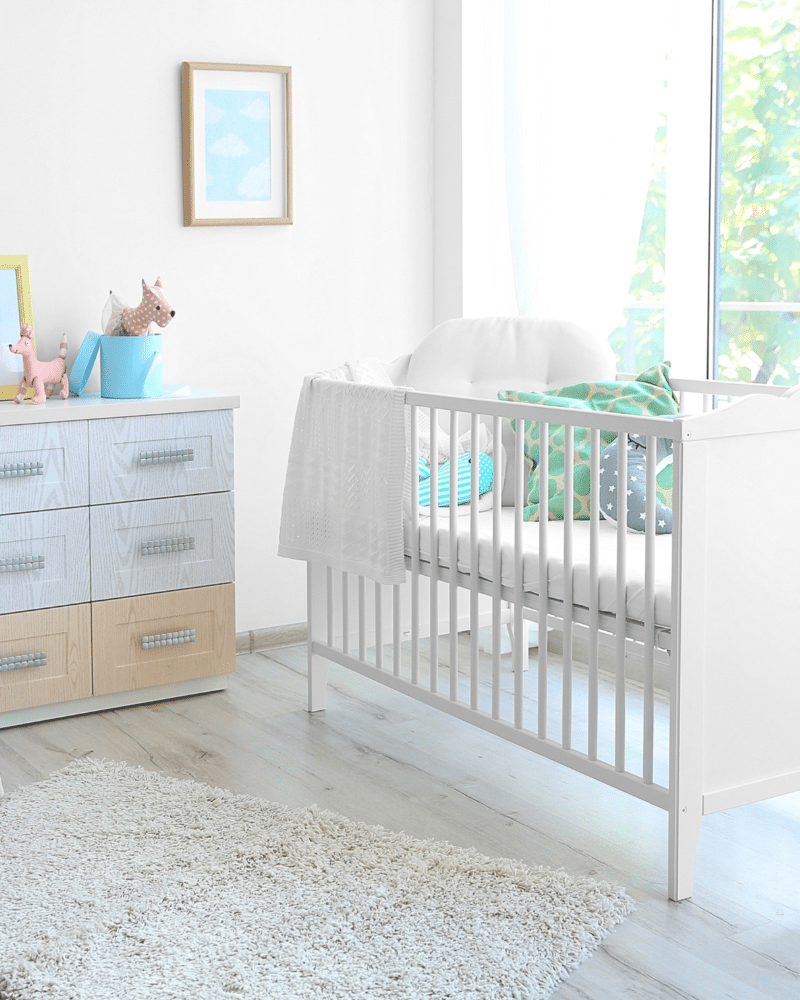
Many parents describe the benefits of babies sleeping in their own cribs as it allows parents to have their own sleep space. This can allow parents to sleep better and reduce sleep deprivation. All of this can contribute to better mental health.
It’s your decision how your baby sleeps. Some methods may work better than others for you and your baby. The main thing is that you have read all of the guidance and are aware of potential risks and how to limit them. You can always speak to your healthcare provider if you require more information on a co-sleeping arrangement.
We hope this blog has been useful on the benefits of co-sleeping. It is recommended that your baby sleeps in their crib in your room for the first six months of their life. This is a great way to support safe infant sleep.
Hey there, I’m Abigail!
In 2022, I graduated with a First Class Degree in Marketing and since then, I have been working as a blogger and Marketing Assistant. Before heading to university, I also achieved a BTEC in Children’s Play, Learning and Development.
I have been blogging for over four years and have covered many topics during this time. My focus has been on pregnancy, babies, sleep and baby name ideas.
I am passionate about learning new things and helping others. I hope that you find my blogs useful and informative. See you in the next article!



